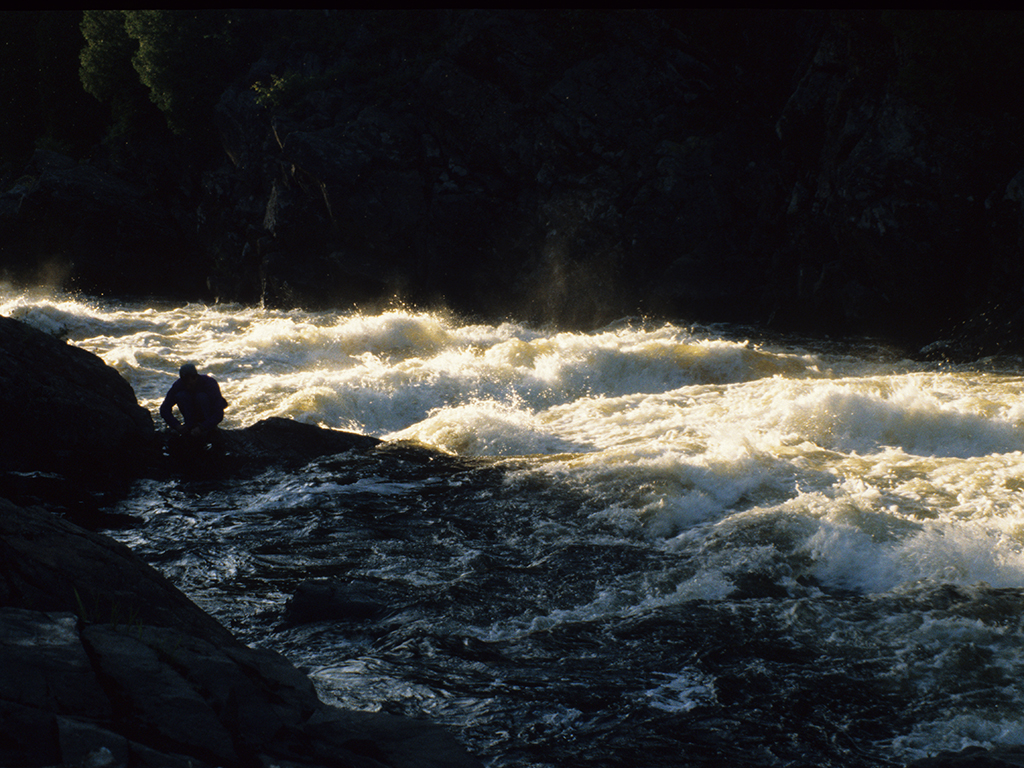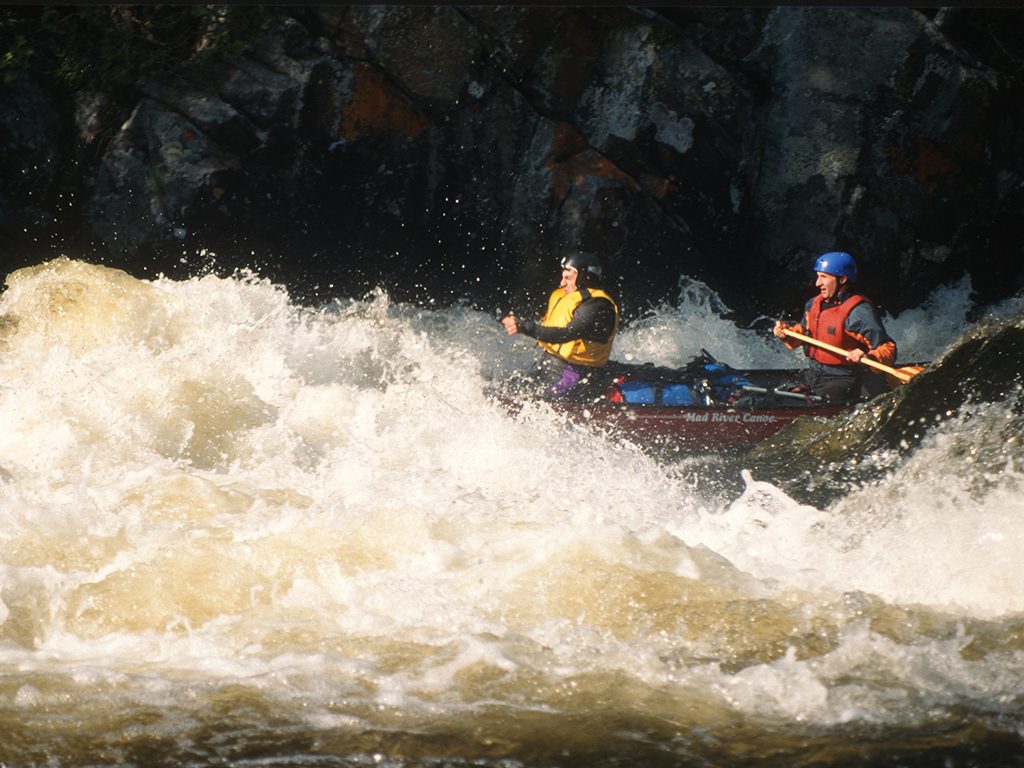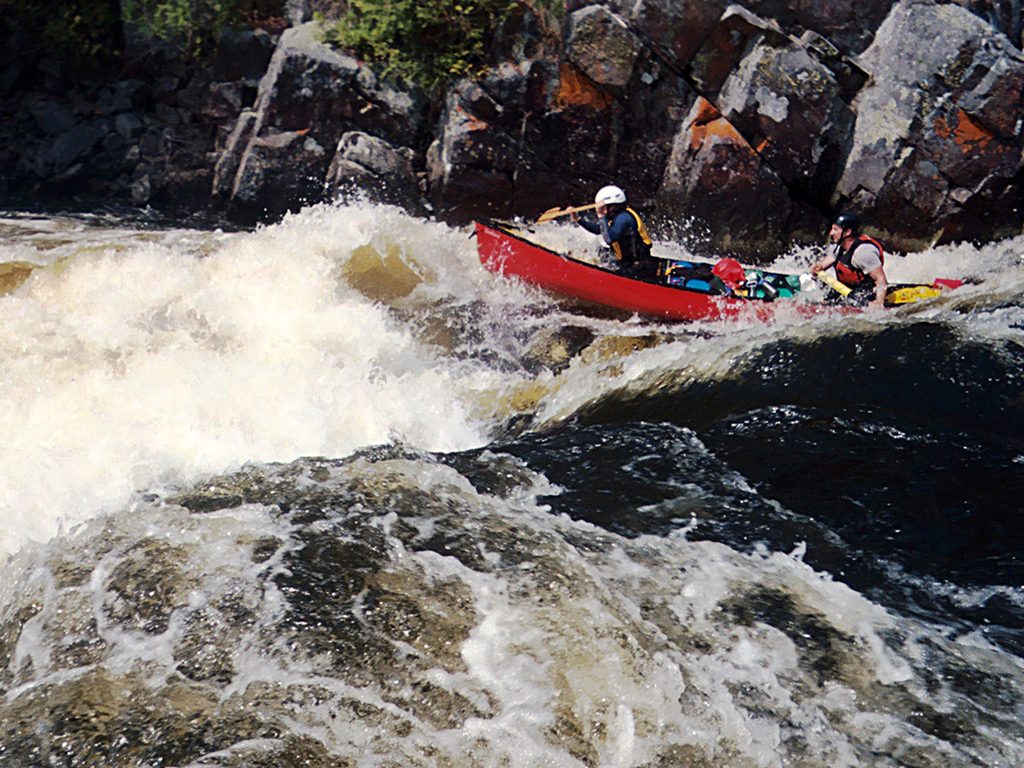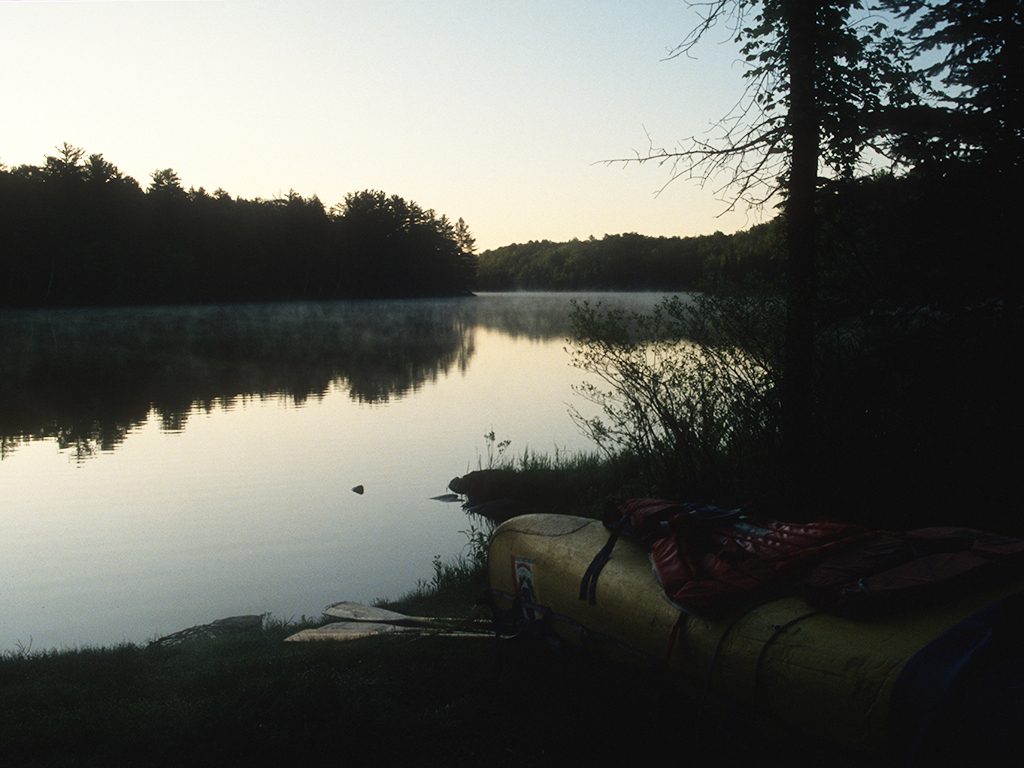We stepped up on the tip of a huge granite tongue overlooking the turbulent water whipping wildly by us.
“This is big water,” my partner warned as he secured the spray deck to the canoe. “This is really big water!”
I took a look and immediately understood. The rising light of June cast a golden hue over the whirling water and whitecaps of the northern Ontario river the Ojibwa Nation named Magnetawan. The centuries‑old term means “swiftly flowing river” and we were about to discover why.
In the center of the river, a massive wave foamed up in a curling white lid that hung above a churning re‑circular left on spin cycle. The only chance we had was to paddle like hell and pray for safe passage.
We shoved off, bending low and ready to brace. The canoe smashed through a succession of standing waves and we roller‑coastered precariously along the right shore, paddling deep to stay clear of our enemy.
“Suddenly, Ken screamed above the rushing frenzy of water, “draw hard!”
I stretched my body across the bow, plunging my paddle firmly into the beast but our canoe held tight with the current. The surface dropped away to a thrashing deep hole of water straight below, and my heart raced as we plunged like a car from a cliff. An immense curtain of water washed over us, turning my vision white with charged emotion. Moments later, we shot out to the surface, cutting and weaving our way past deadly boulders while I tried to regain my senses.
Our first major test ‑ Seller Rapids ‑ was over within minutes as the waterlogged canoe lumbered towards shore. I turned my stiffened body towards my exhausted partner and we raised our paddles, slapping wood in a triumphant high‑five that signaled a growing confidence and a well‑deserved rest.
The day before, I was still on the highway listening to my partner Ken Wood, a 20‑year veteran canoeist and kayaker, talk about this often demanding river that carves its way through the rugged Canadian Shield from its source ‑ Algonquin Provincial Park ‑ to Georgian Bay on the east side of Lake Huron. Ken spoke about a trip on the same river five years earlier in which the nose of their kayak smashed off on rocks during the beginning stages, and the river’s final goodbye nearly sent two of the members over a three‑metre waterfall.
I had also been uneasy about the trip since it was the first one of the year and only my second time running white‑water. An excursion nine months earlier in Algonquin Park was the last time we both had felt the mighty forces of Mother Nature. The trip was my first exposure to the techniques involved in controlling these sleek crafts and the incredible sensation of this new‑found love of mine.
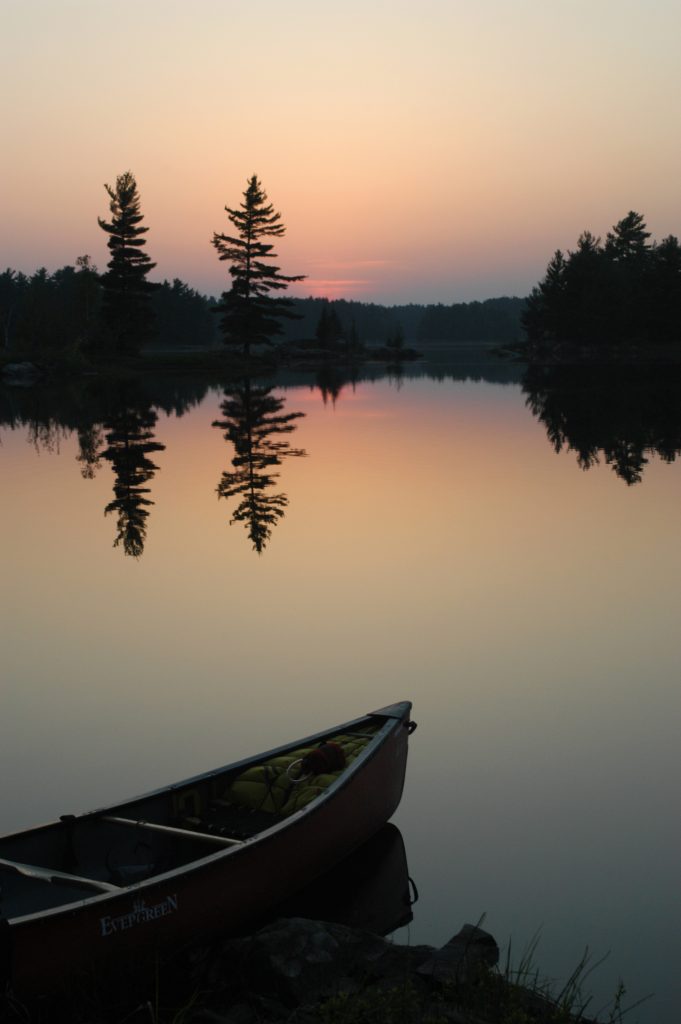 The first day was a relaxing build to what we would eventually face throughout the challenging and often breathtaking 120‑kilometre journey which took us from just outside the town of Magnetawan to where Highway 69 meets the river several kilometres from Georgian Bay. Eager to start our journey, we decided to leave our car at the starting point and worry about picking it up later. We quickly slipped our ABS 17‑foot canoe into the river’s clean, dark surface and loaded in our gear: two 120‑litre storage barrels and a smaller 60‑litre barrel, plus a spray deck, wet suits and an ammunition box to protect my camera gear from water damage. All would prove invaluable as each new set of rapids tested our endurance.
The first day was a relaxing build to what we would eventually face throughout the challenging and often breathtaking 120‑kilometre journey which took us from just outside the town of Magnetawan to where Highway 69 meets the river several kilometres from Georgian Bay. Eager to start our journey, we decided to leave our car at the starting point and worry about picking it up later. We quickly slipped our ABS 17‑foot canoe into the river’s clean, dark surface and loaded in our gear: two 120‑litre storage barrels and a smaller 60‑litre barrel, plus a spray deck, wet suits and an ammunition box to protect my camera gear from water damage. All would prove invaluable as each new set of rapids tested our endurance.
With a drop of 800 ft. from beginning to end, the Magnetawan isn’t a large‑scale river, but it did present a constant source of danger to early log drivers and still offers some of the best white‑water in the province. Amid the peaceful stretches of flatwater that join several large lakes, lie series after series of rapids and narrow chutes ranging from Class II to the unrunnable. Portage trails are maintained by the provincial government for those who prefer to stay dry.
Bank swallows dipped and dived in playful spirits at the start of our journey ‑ Knoefli Falls. Easy access to the river can be found at that spot where Highway 124 winds its way north of Ahmic Lake. A few kilometres downstream at Poverty Bay Chutes a grave marker warned us of the falls that welcomed kayakers but spurned canoeists as one unlucky fellow discovered. The short portage was a must.
We received our first and only taste of rapids that day a little further downstream where a relatively tame unnamed set veered 90 degrees to the left. It was a good chance to stretch our muscles and get comfortable with the canoe before the morning’s main event. That night, we camped high above Seller Rapids whose roar kept drawing us near to uneasily watch our fate surging below.
But now that we had successfully shot the first big water on day two of the trip, Ken and I were thirsty for more and eagerly paddled another kilometre until we could see the wave‑tops of Ross Rapids dancing above the water line. A quick read of the river and we were on our way through this fairly easy Class III set, packs and spray deck firmly in place as we sank into a churning hole and popped straight up over a huge rooster tail on the other side.
That night, under a blanket of stars, we set up camp on a beautiful rocky site at the top of an an unnamed set of rapids we eventually dubbed “Welcome to the Jungle.” At the edge of a steep‑faced cliff lie three huge standing waves, the last being a monster hole. Definitely a big water Class III set!
A hearty pot of curried chicken filled us up as we dried out and talked of the early explorers who courageously ran this river long before Kevlar and Gortex were invented ‑ people such as Lieutenant F.H. Baddeley of the Royal Engineers who was the first white man to explore the area in 1835. A loon had the last word of the night as the surrounding trees and roar of the rapids faded with slumber.
We awoke to a marmalade sunrise that cast long shadows over the steaming rapids. The decision was made to prepare for a fully‑loaded ride ‑ a good choice since the buoyancy of the barrels and the protection of the spray deck would help us get through intact. The plan called for staying close to the left shore, but our canoe was easily pulled straight into the last and biggest hole. Ken fought to keep the boat balanced but I was thrown hard to the left and the canoe tipped in the air, sending us crashing into the water. I leaned to the other side and managed to keep the canoe from capsizing but water rushed into the canoe.
I was slowly becoming accustomed to the river’s unmistakable energy, but never strayed from listening to Ken’s commands from the stern ‑ his voice was always a clear measure of the degree of danger ahead.
After shooting the friendly waters of Cody and Porter rapids, we began to notice a change in scenery. The mix of poplar, birch, hemlock, and evergreens gave way to soaring wind‑swept pines and the dense brush receded from the shore, exposing the greyish‑blue granite underneath.
This was the part of Canada we had sought ‑ an untamed wilderness boasting a rugged pride in its resilience to time. We paddled in silent solitude, taking it all in. A great blue heron rose up from a small bay, lazily flying to its next chosen fishing grounds. Overhead, turkey vultures soared in huge sweeping circles while an osprey dived into dark olive waters behind us. Ken stopped paddling and pointed to a deer cautiously staring at us from behind a row of juniper bushes. The shy doe cocked its ears and then vanished into the greening forest. Each paddle stroke sent us deeper into our own Eden.
Dusk came quickly and I awoke from my dreamily state as the menacing roar of Lower Burnt Chutes grew louder. Towering canyon walls on each side amplified its Class IV ferocity. We glided to shore and climbed onto a ledge that gave us a good view of what was to come. Ken jumped from one rock to another, studying the river’s hidden messages. Occasionally, he would throw pieces of wood in the water and watch where our canoe might end up. We decided to shoot it before rewarding ourselves with a roaring campfire and a hearty dinner of beef stew. Big waves and holes told us the packs would have to be left at the bottom of the set. We chewed on some salami sticks to rejuvenate ourselves and hoisted the 100‑lb plus barrels on the sloping overgrown trail.
Once back to the canoe, we secured the spray deck and started off, staying right to avoid the first major hole. The current tried to force us to the center but some serious cross‑draws kept us clear. After that, the only clear way is through the middle where several other large holes awaited. We dipped and smashed into the first wall of water, then the next, and next until my balance gave way to exhaustion, flipping us cleanly into the churning water. Moments later, I found myself clinging to a rock and watching the overturned canoe bounce downstream.
I wanted to make this set badly, and though I still had my paddle in hand after the wet ride, it wasn’t much consolation. Once again, we swallowed our egos along with a good dose of water but we didn’t lose any gear and hastily set up camp beside a small weather‑beaten hunting camp.

The next morning, we portaged past the narrow passageway of Needles Eye Rapids. We had no choice since the huge drop at the start would certainly have capsized us, leaving the long stretch of large rocks and big water to finish us off. For most of the cloudless day, which we were fortunate to encounter for all but one night of our trip, we glided along the flatwater of Wahwashkesh and the Big Top Lake. Huge cottages with manicured lawns perked our curiosity as to how much money and how many trips by barge it would have taken to bring the supplies used to build these northern castles.
A few hours later, the waterway narrowed and we were back on the Magnetawan, and looking for camp which we found overlooking the top of Big Deep Bay. The site showed spray‑painted signs of its popularity among other wilderness‑seekers but we soon discovered that black flies and mosquitoes were also comfortable there, waiting for their next victims.
That night was the beginning of a very strained relationship with these tiny blood‑suckers. Before the trip was over, Ken would come to the realization, “I haven’t seen this many black flies and mosquitoes since I was in the Yukon.”
Little did we know that for the last stages of our trip the relentless feasting would leave the exposed parts of our bodies swollen with bites since the insect repellent washed off with every rapid. (Ken counted 302 bites on his left ankle, alone). Once the trip was over, we both felt feverish for several days after but only on two occasions were we so overcome that we were forced to jump into the safety of the river. The beauty of the area and the constant challenges we faced at almost every turn kept our minds off the insects, for the most part.
The next day, we came across a perfect example of the breathtaking beauty this river offers. A group of small islands splits the river into smaller cascading tributaries that innocently ripple over glacial till as tree branches reach lazily overhead. We had no qualms about taking a long lunch of sandwiches in our canoe to admire this slice of ecstacy.
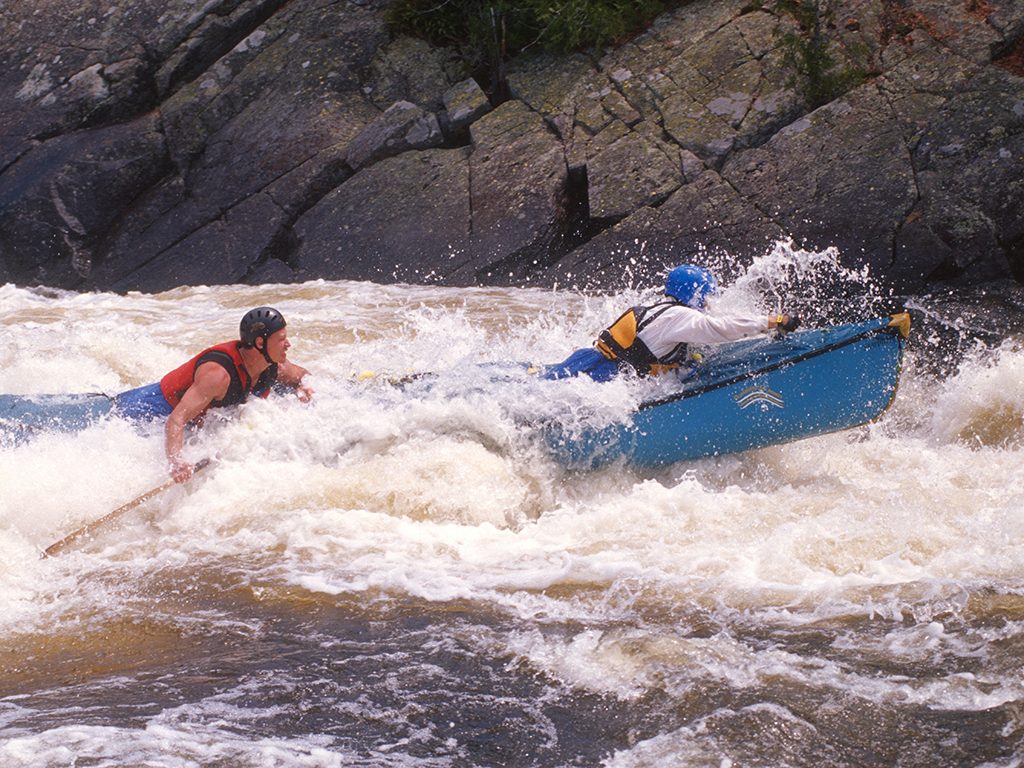
Almost immediately after, the sheer 30‑metre cliffs of Canal Rapids rises up, dwarfing both canoe and paddler in their wake. Below, the river offers easy eddies on the left side among the many downstream “Vs”. The Class III rapids could have gone on forever, but for those without a spray deck, the consequence is frequent stops to bail.
From there, the river widens to form Trout Lake, a popular area for hunters and anglers. Here, the long, narrow lake serves up pickerel, pike, and lake trout but for the first people we met on the trip, the taste of freshly caught fish was still a dream to them. Hours of flatwater gave us another chance to scout the shoreline for animals and sunbathe while we slipped downstream among the granite and sweet‑smelling pines.
Ken took advantage of Mountain Chute along the way and soloed while I watched in awe of his technique. The force of water from a ledge would have flipped most canoeists but Ken leaned, almost inhumanely from the canoe, braced hard and shot through with barely any water to bail. Though he used the spray deck, I still found the sight unbelievable since the craft looked almost totally submerged in foaming water as he ran it.
Darkness slowly enveloped us and we braced for another night of battle with the black flies and mosquitoes which were beginning to take their toll on us as we made camp on a small island. The heat from the spaghetti lured the infra‑red equipped mosquitoes to our site, making it a short night.
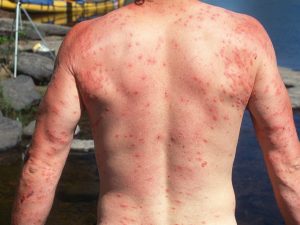
The following day, we paddled through Island Lake to Three Snye Rapids where Ken showed his expertise once again on a solo run while a took photos. Armed with half the spray deck and barrels which kept him well above the waterline, he shot straight over a huge rooster tail and played in the turbulence afterwards.
Further ahead came an unnamed chute that we dubbed “Nosedive” since that’s exactly what happened to us. We shot this heavy duty Class III whitewater with the packs and deck and it ate us for lunch. We laughed hard at the ease in which we capsized ‑ the chute was in no mood to have anyone playing with it and proved it by keeping Ken on the bottom of a re‑circular for a few unnerving seconds.
After a brief encounter with a couple of holes that lay waiting under a wooden bridge, we came upon the grand‑daddy rapids of the Magnetawan ‑ Thirty Dollar Rapids.
“Yes, and for this low, low price, you too can die,” we joked uneasily.
The series was definitely Class V for at the beginning was the waterfall that had nearly claimed Ken’s colleagues on a previous trip. Portaging was not only the safest but most aesthetic way to view the rapids. Nevertheless, we sat on the rocky shoreline only a few minutes before the black flies were too much to handle. We hauled the barrels through the thick underbrush and open spaces, almost at a run. Along the way, a spruce grouse fluttered onto the trail and I nearly stepped on it before the the bird turned back into the dense forest. A second load later, we put the canoe in near the bottom of the rapids. that part looked runnable ‑ the three monster holes waiting to snap us up looked easier to contend with than the insects swarming around us.
We jumped in the canoe after a quick scout and stayed to the right, succeeding to avoid the first hole and punched through the next with our packs and deck still intact. But the current washed us up on the right shore and we hung there precariously, the canoe’s nose clinging to a large flat rock. Suddenly we broke free and dropped dead centre into a washing machine that churned us around and spit us out on the other side, throwing us into the water. The river held me under, twisting and turning me helplessly until I finally reached the surface. Surprisingly, I had once again managed to hang onto my paddle while making it to shore. That thought washed quickly away when I didn’t see Ken who had also been caught in the undercurrent. I searched for any sign for him and drew a sigh of relief when he appeared from the depths, his dripping face brandishing a big grin.

Gathering up our courage and gear once again, we shot the last section of the rapids with its huge walls of water that I termed “face slammers”. Ken never felt the true force of those waves but I drank my share of the river and so did the canoe.
That night the rain came down briefly but it didn’t dampen our spirits. Though it was the last night we would enjoy this mighty river and all we had learned, we couldn’t stop talking about the adventures of the last few days. We tried to remember each detail, each emotion, and each stroke before the stars went out for the night.
The next morning, the call of a loon marked the beginning of the last day and we paddled slowly, knowing the concrete civilization awaited us. A group of canoeists, also making their way to Highway 69, stopped us to take photos of our bloodied, insect‑ravaged backs and we left them feeling like backwoods celebrities. We portaged past an unrunnable and unnamed set and sneaked our canoe through another with three carnivorous holes that were escapable by taking the channel on the left shore.
Close to the highway, we took advantage of some flat rocks on the edge of the rippling water and climbed out of the canoe. The afternoon sunlight warmed our beatened bodies as we lay basking in the everlasting memories nature had provided. The insects were conspicuously absent ‑ maybe they had compassion after all. They too could be just like the Magnetawan, a constant presence at every turn, whether it gave us serenity or adrenaline‑pumping action.
I cupped some of the river’s water in my hands and drank, savouring each drop, never to forget the taste of this truly magnificent river.
Story by Ralph Plath
Photos by Ralph Plath
and Ken Wood
Getting There and Back
The only way we have shuttled is to do it ourselves by parking one vehicle at Knoefli Falls (there is a small parking area at the dam there) and parking a second vehicle, for a small daily fee, at the end of the river where it meets Georgian Bay at River Haven Resort. You may be able to convince someone there to shuttle you to the put-in.
– website – http:/www.riverhavenresort.com
– tel. – 1-866-511-9215
or 705.383.2426
